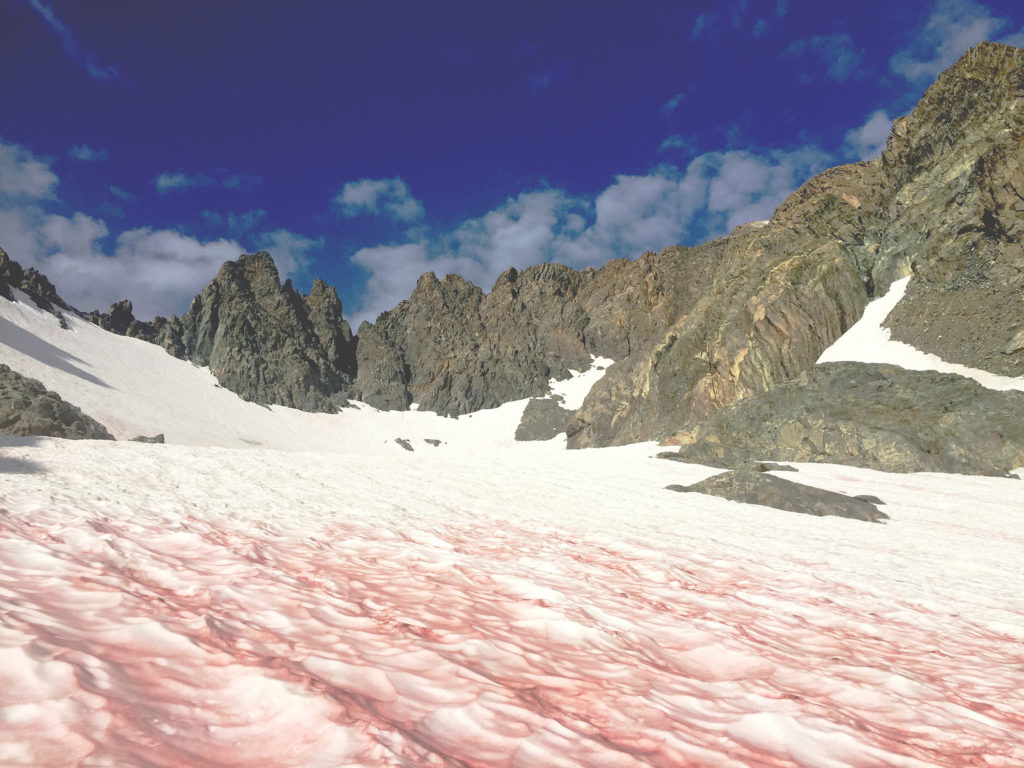Prominent newspapers, magazines, and journals across the country, including The New Yorker, Business Insider and Nature Geoscience, have picked up MSES student Gerard Ganey’s research paper on “watermelon snow” in recent weeks.
In his study, done with Professor Roman Dial, Ganey discussed how an algae species found in glaciers can tint the snow crimson and cause the surrounding ice to melt faster.
The paper explained that the red hue, which is found in alpine and polar settings around the world during spring and summer months, comes from a class of pigments in the algae. The more that are packed together, the redder the snow, and subsequently, the faster the ice melts. While the melt is good for the microbes that need the liquid water to survive and thrive, it’s bad for glaciers that are already melting from a myriad of other causes.
To further test their theory, the researchers grew the pink snow with water or fertilizer in experimental plots in Harding Icefield and compared the growth response of the algae to control plots where nothing was added (they also sprayed some algae-destroying bleach on a few plots to make up for it). Adding water, they found, led to a 50 percent growth compared to the control regions. Adding fertilizer quadrupled the growth.
They then tracked how much the areas melted over the course of 100 days. As they thought, places with more algae melted at a faster rate than where algae had been removed. They also employed satellite imagery to find that the algae grew on more than a third of the entire icefield (270 of 730 square miles).
Dial said it’s too early to tell just yet what the melting means for Alaskans.
“We need to know how widespread the effects of snow algae are on melt,” Dial explained. “If they are widespread, then it means algae could contribute substantially to glacier melting, sea level rise, and even warming, since they absorb solar energy that further melts glaciers that reflect light that generally cools the atmosphere. If they are not widespread, then it’s just an interesting fact.”
The next step in the process in seeing just how widespread the melt is will using satellite imagery. Professor Jason Geck’s Remote Sensing class is currently doing a class project on that right now.
Though Dial has been involved with snow algae studies for 15 years, he said MSES student Gerard Ganey was the lead author on the paper and did all of the work.
Over the course of the study, Ganey made dozens of trips up to Harding Icefield, none of the using helicopters or airplanes, rather all by foot and skiing. He enlisted APU Ski Team members and professional climbers to help him, as they were the only ones who could keep up.
“He weathered storms, wind, and rain,” Dial said. “He literally used data from the microscope to the satellite. He learned glaciology, microbiology, spectrometry, remote sensing, statistical analysis, GIS, and modeling on top of hiking from near sea level to 4,000 feet to undertake experiments in one of the harshest environments in Alaska: rainy, windy icefields.”
Dial added, “From my point of view he represented what an APU grad student is all about: physically tough, intellectually capable, persistent, and inter-disciplinary.”

